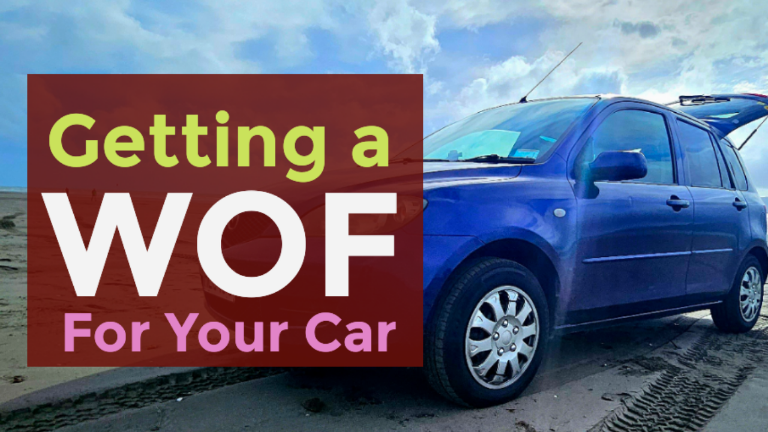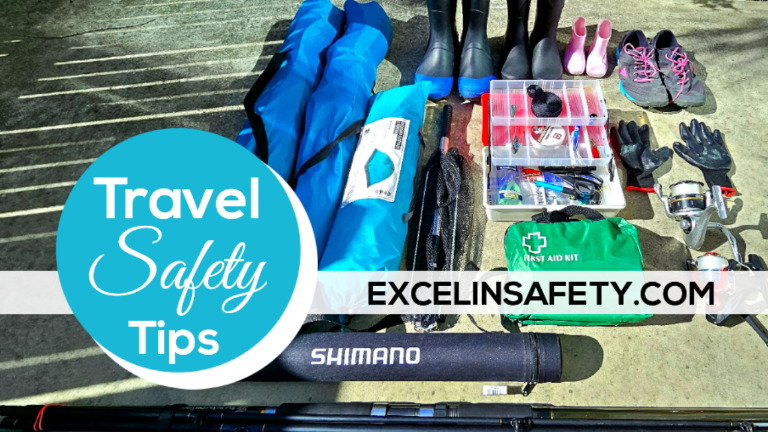Warrant of Fitness (WOF) and Its Impact on Occupational Safety
Owning a car comes with the responsibility of ensuring it is safe and roadworthy. In New Zealand, this is achieved through the Warrant of Fitness (WOF) system. Recently, I had a WOF inspection done for my 2005 Mazda Demio, and it got me thinking about the broader implications of this safety measure, particularly in relation to occupational safety and health.
While waiting for two (2) hours for the full car service and WOF to be finished, I researched and read articles about WOF and am about to share this with you.
Why Your Car Needs a Warrant of Fitness (WOF)
The Warrant of Fitness (WOF) is a mandatory safety inspection for vehicles in New Zealand. It ensures that vehicles meet the minimum safety standards to be legally driven on public roads. For my Mazda Demio, a 2005 model, regular WOF checks are crucial due to its age. Older vehicles are more prone to wear and tear, which can compromise safety if not properly maintained.
The primary reasons for needing a WOF include:
- Safety Assurance: The WOF check covers essential safety aspects of your car, such as brakes, tires, lights, and structural integrity. Ensuring these components are in good working order prevents accidents caused by mechanical failures.
- Legal Compliance: Driving without a valid WOF is illegal in New Zealand. If caught, you could face fines and penalties. More importantly, your insurance might not cover any accidents that occur while your car is non-compliant.
- Peace of Mind: Knowing that your vehicle has passed a WOF inspection gives you confidence that it is safe to drive, protecting you, your passengers, and other road users.
Benefits of the WOF System
The WOF system offers several benefits that extend beyond individual vehicle owners to the broader community:
- Reducing Road Accidents: Regular WOF inspections help identify and rectify potential hazards before they lead to accidents. This proactive approach significantly reduces the likelihood of road accidents, making roads safer for everyone.
- Economic Savings: Preventative maintenance can save money in the long run. Identifying issues early through WOF inspections can prevent costly repairs and extensive damage that might result from neglected problems.
- Environmental Protection: Ensuring that vehicles are well-maintained can also positively impact the environment. Efficiently running cars emit fewer pollutants, contributing to cleaner air and a healthier environment.
Connecting Vehicle Inspection to Occupational Safety
The principles behind the WOF system are directly applicable to occupational safety and health. Just as regular vehicle inspections ensure road safety, routine checks and maintenance in the workplace can prevent accidents and injuries. Here are a few parallels:
- Preventative Measures: In both vehicle maintenance and occupational safety, regular inspections are key to identifying and addressing potential hazards before they cause harm. This proactive approach is fundamental in creating a safe environment.
- Compliance and Standards: Adhering to safety standards, whether on the road or in the workplace, is essential for legal compliance and protecting individuals. Both systems emphasize the importance of meeting established safety criteria to prevent incidents.
- Safety Culture: Regular WOF inspections promote a culture of safety and responsibility among vehicle owners. Similarly, consistent safety checks in the workplace foster a culture where safety is prioritized, and everyone is aware of their role in maintaining a safe environment.
The WOF Inspection Process
To give you a clearer picture, here’s a brief overview of what happens during a WOF inspection for a vehicle like my Mazda Demio:
- Exterior Inspection: Checking the condition of the bodywork, doors, and windows to ensure there are no significant damages or rust that could affect structural integrity.
- Lights and Signals: Ensuring all lights, indicators, and reflectors are working correctly. This includes headlights, brake lights, turn signals, and hazard lights.
- Brakes and Suspension: Testing the brakes for efficiency and checking the suspension system to ensure the vehicle handles properly and stops safely.
- Tires and Wheels: Inspecting the tires for adequate tread depth and checking for any damage or excessive wear. The wheels are also checked for proper alignment and condition.
- Interior Checks: Verifying that seatbelts are in good condition and functioning properly. The overall condition of the seats and dashboard is also checked.
- Under the Hood: Examining the engine, fluid levels, and battery to ensure everything is in working order. The inspector will also check for any signs of leaks or other issues.
- Road Test: In some cases, a brief road test may be conducted to assess the vehicle’s overall performance and handling.
Ensuring your vehicle is safe and roadworthy is not just a legal requirement; it’s a critical aspect of protecting yourself and others. To help you stay on top of your vehicle’s maintenance, we’ve created a comprehensive Vehicle Inspection Checklist. This free resource will guide you through the essential checks you can perform regularly to keep your car in top condition between WOF inspections.
Download Your Vehicle Inspection Checklist
By following this checklist, you can proactively maintain your vehicle, ensuring it remains safe and reliable. Remember, a well-maintained vehicle is a safer vehicle, contributing to safer roads and a safer community.
The WOF system plays a vital role in maintaining vehicle safety and, by extension, supports the principles of occupational safety and health. Regular inspections and maintenance not only ensure compliance with legal standards but also foster a culture of safety that benefits everyone. Stay safe and keep your Mazda Demio (I mean your car, whatever it is) running smoothly by adhering to these guidelines and making use of our inspection checklist.







Leave a Reply
You must be logged in to post a comment.